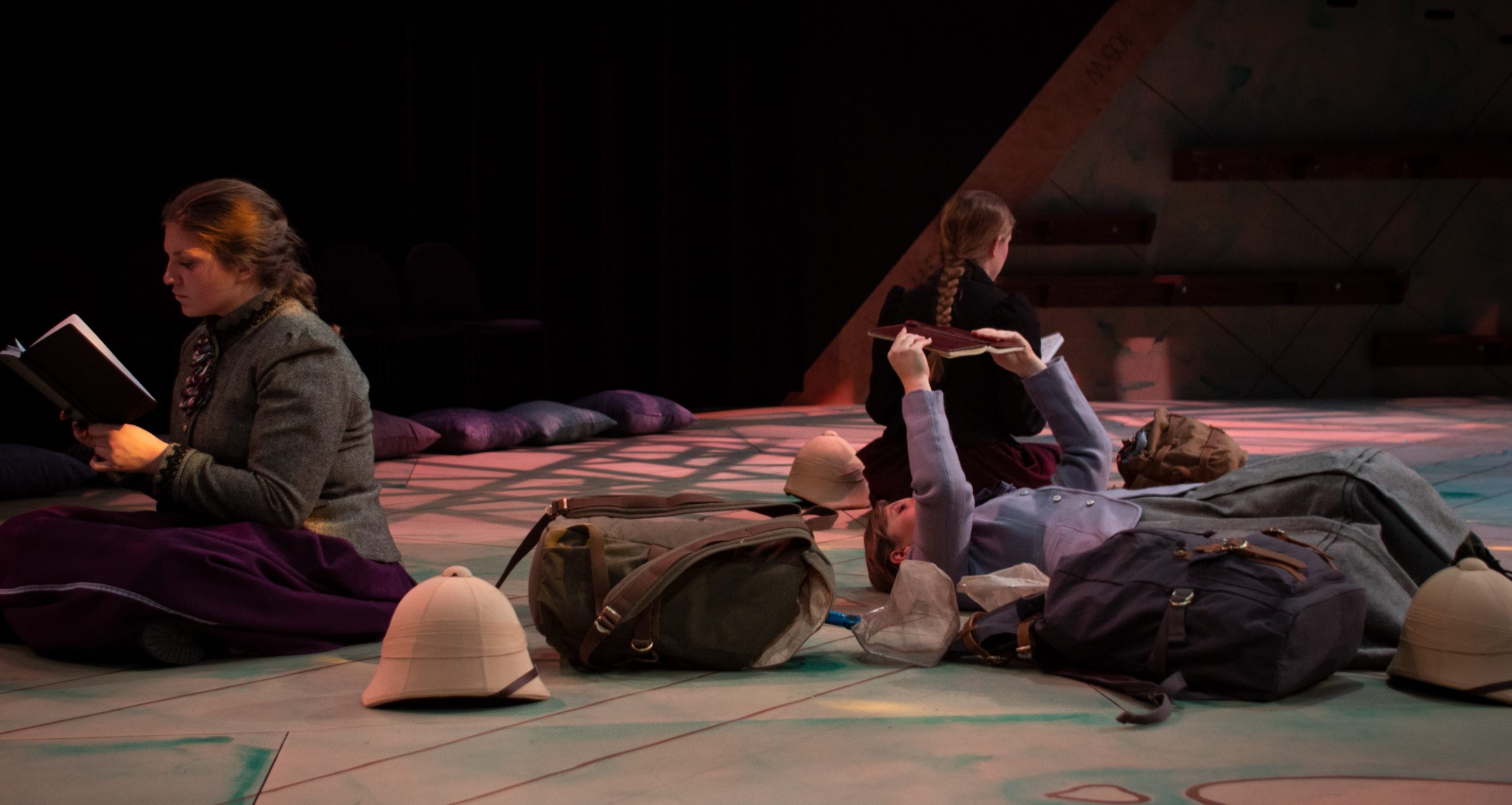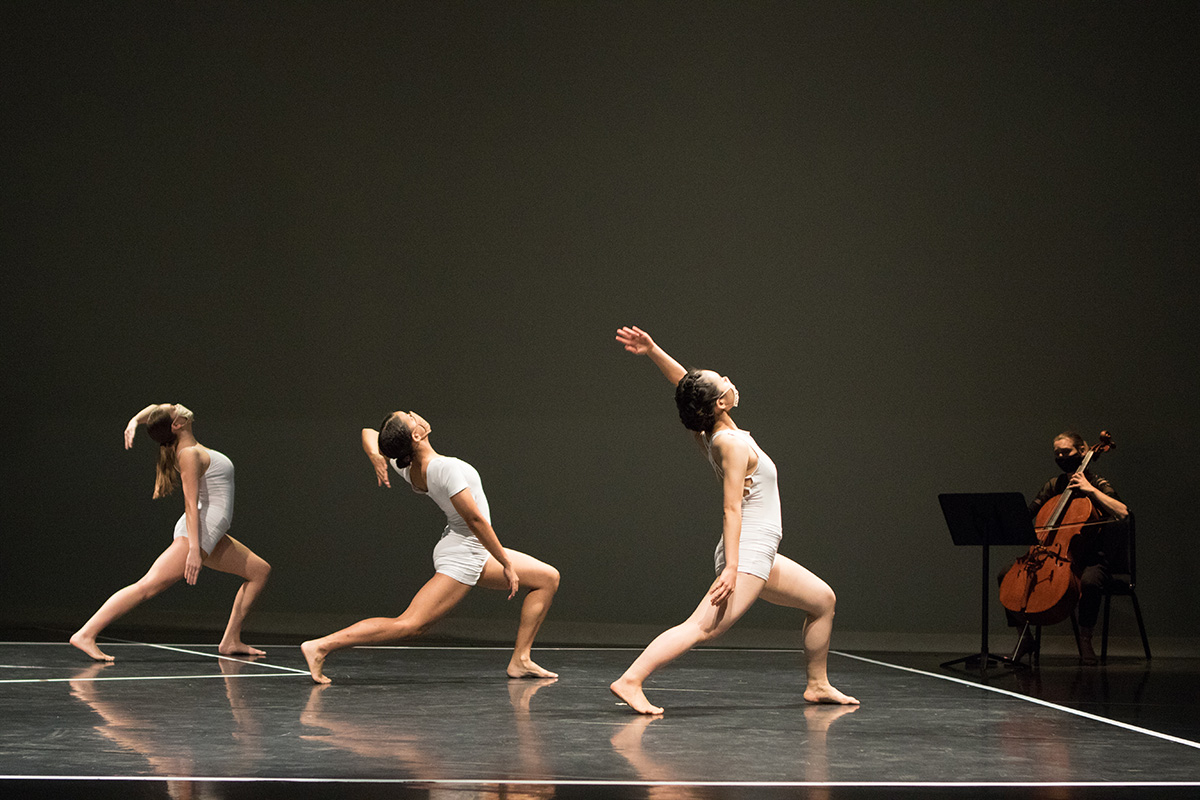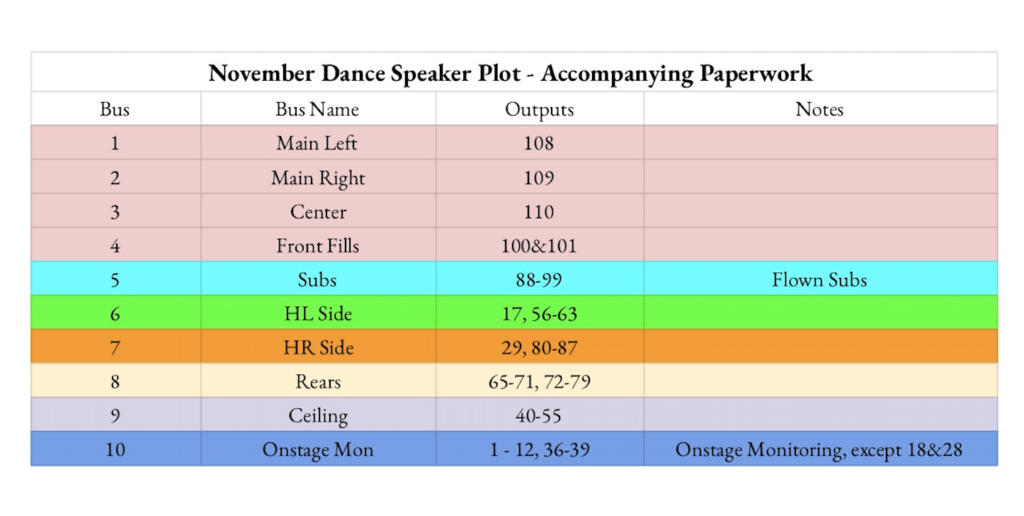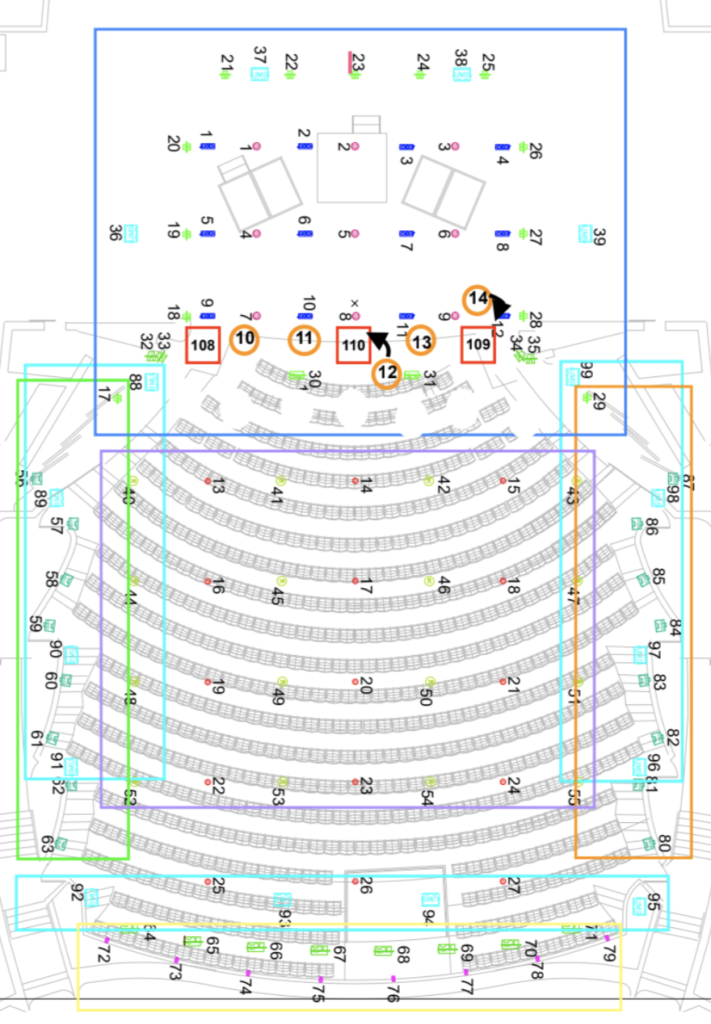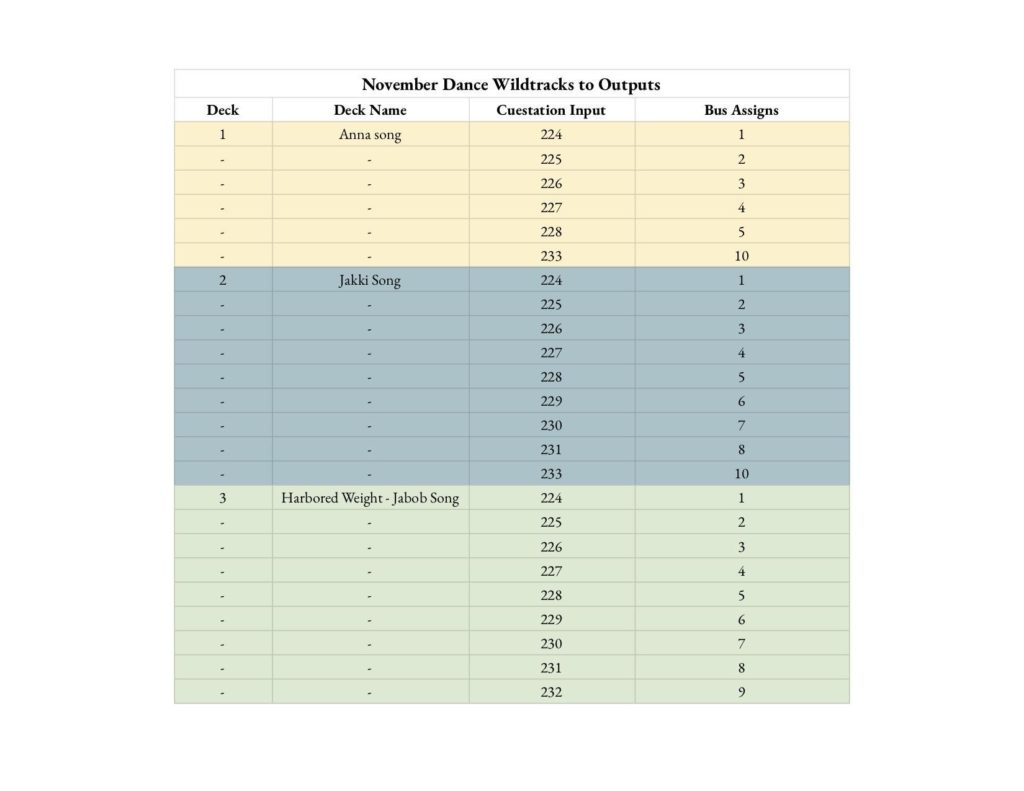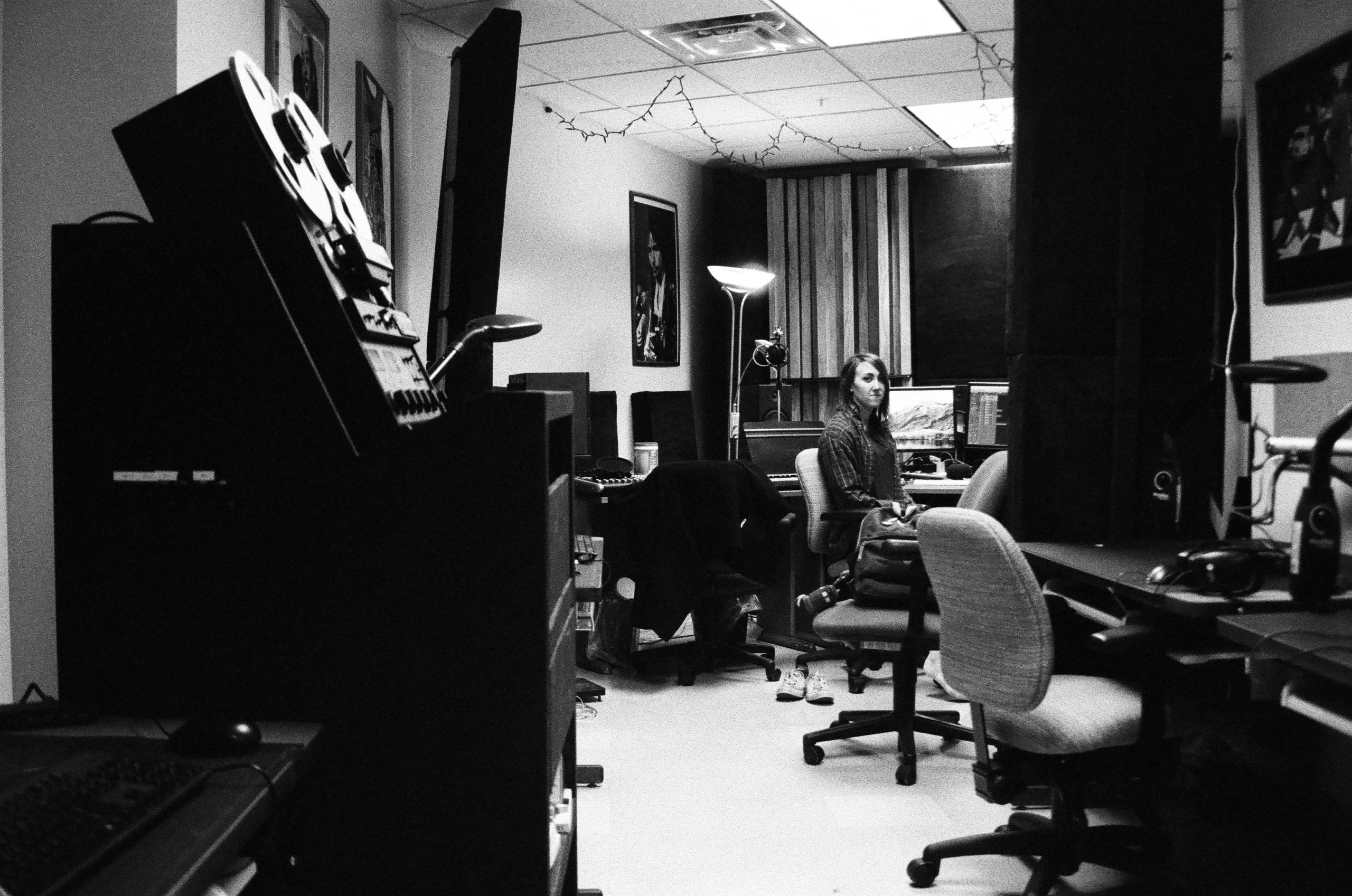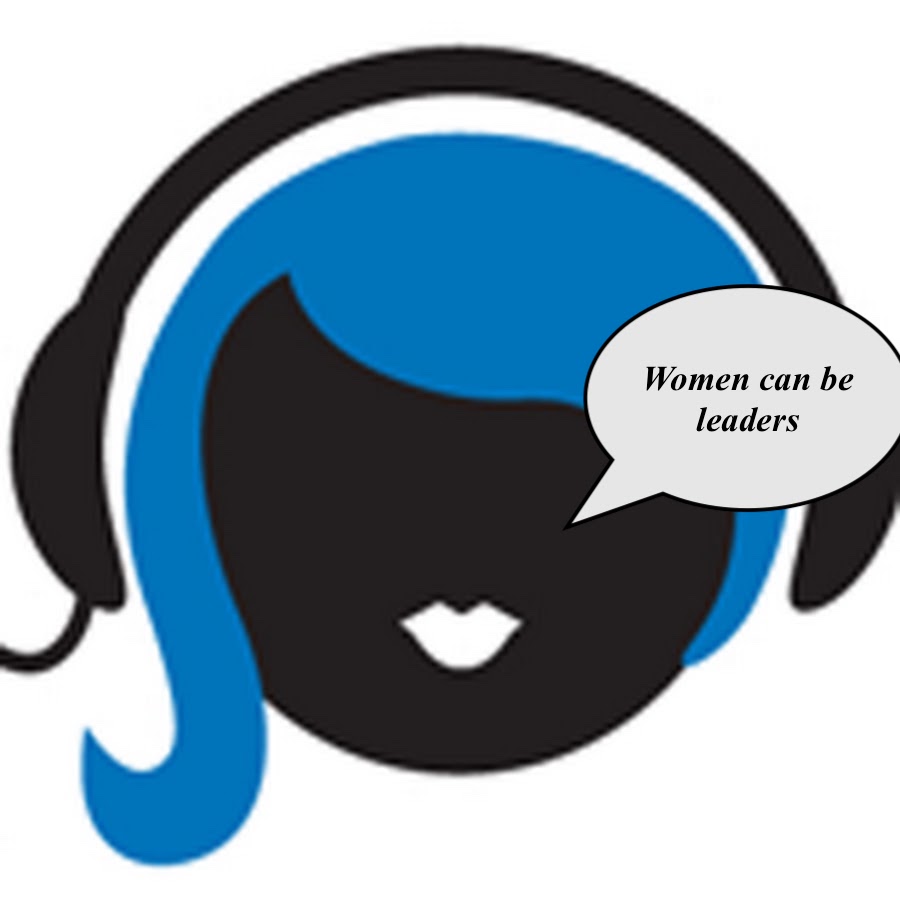Recently, I have developed a desire for more information regarding better ways to take care of myself, specifically the professional me. I want more techniques and concepts tailored to my profession, regardless of what hat I am wearing that day. I also knew that I needed the how and why these techniques and concepts are being suggested to me. That way I could customize a routine to suit my ever-changing needs. I needed to find something that dove below the surface and I wanted to share my findings with others in the audio industry.
I began this process by sending out a survey to colleagues, peers, and friends. The survey asked what the individual does for work and what kind of concerns they have or struggles they face daily doing said work. The information I received ranged from anxieties for their body, to mental health issues, and personal challenges. I chose to first look into the physical concerns that surveyors had. I collected practices, techniques, and backed research that could provide information to those who are looking to take better care of their body in the audio industry.
Posture
Posture is one of my problem areas and I was not surprised to hear reports of body pain in my survey. Responses like ‘Generally poor posture from prolonged periods at desk. Occasionally required to lift things beyond what I believe is safely within my strength capability,’ echoed similar situations that I have experienced. I broke posture down even further to take a look at specific bad habits and suggested practices that can aid in better posture and less aches and long-lasting pain.
A lot of our work as audio people is conducted sitting at a desk or standing for long periods of time. Prolonged sitting contributes to a flattening in the natural lumbar curve, muscle fatigue, and deconditioning of the lower back muscles (Jung). Not only is this going to cause immediate discomfort, but also long term health issues. Issues with posture and back pain are often considered to be challenges faced when you are much older, however none of the survey respondents exceeded the age of thirty-five. There is also the factor that audio engineers and technicians heavily use and rely on their bodies. Excessive, heavy use is going to take a toll on the body, regardless of age. Once we cannot use it anymore, we can no longer do our job.
Similar to our ears needing breaks, our backs need them too. Ear and back fatigue go hand in hand in this industry. Prolonged sitting requires us to break up these stretches of time with movement. Getting up for a walk and stretch will also give your ears a break. I say stretching as a general term because any movement is welcome for this situation. Sitting puts a lot of stress on the discs in our back. Movement will help relieve some of that pressure and allow you to come back to the workstation feeling refreshed.
Rounded shoulders are another posture problem that is exhibited in my surrounding colleagues. This bad habit is personal to me as well and causes a great deal of pain. Similar to how sitting posture can affect and change the muscles in the lower back, this can also occur in the shoulders and neck. This can result in a reduced range of motion, muscle weakness when performing the easiest of tasks, and the individual being more prone to serious injury (Malmström). This poor posture puts the body out of alignment. Misalignment adds stress to the body and mind, decreases range of motion, pain and stiffness in the neck and shoulders, and limits the overall support that our spine can provide us.
I have learned several beneficial techniquest to free this region of my back. The Feldenkrais Method and exercises are some of the most helpful for me. Not only does this method help the body-mind connection, but the exercises can aid in easier movement, increased utilization of the nervous system, reduce muscle tension, and even aid in breathing. There is also Progressive Muscle Relaxation. This method is similar in it also supports a mind-body connection. However it functions a little differently. This relaxation technique incorporates tensing and relaxing muscle groups. It has been found to aid in relaxation and anxiety, help differentiate between tenseness and relaxation, and pinpoint problem areas. Oftentimes, people don’t recognize that they are holding tension, which is where PMR can help.
The last issue on the topic of posture is called Tech Neck or Computer Neck. It is something exhibited in every person who owns a phone. Most of us are also familiar with the term ergonomics. Someone who suffers severely from posture issues might consider setting up their workspace with ergonomics in mind. A good place to begin is with your computer screens and monitors. These should be an arms distance away with the top of the screen at eye level. This will keep you from looking downward at your work and deter you from slouching.
Lastly, like I said before, stagnation leads to stiffness and lack of movement leads to weak muscles and pain. Gentle rotation and stretching of the neck and head is going to relax these muscles. Don’t become a vulture at your desk.
Diet
Diet was also a unanimous issue sounded throughout the survey responses. One surveyor reports, ‘I generally don’t build the padding into my schedule for real meals, I very often find myself going to the King, the Clown, and the Colonel. Definitely starts to show itself after a weeklong gig of eating the greasiest food available.’ What I have seen from reports, diet comes with two issues. One being the above; not having access to the best food when on the job. Not only are these eating habits going to contribute to weight gain, but also increase rates of hypertension, high cholesterol, and diabetes (Bray). These are life long effects that can generally be avoided.
The second issue being the lack of understanding of nutritional value and how to use that to your advantage. If you feel like you are not eating enough, take a look at what you are putting into your body. What foods are high in good calories and what contain empty calories. Some high calorie food options are;
- Cheese and yogurt
- Whole grain pasta, bread, and brown rice
- Tree nuts and peanuts
- Protein shakes and smoothies
- Lean meats and salmon
I like to incorporate high calorie foods into my snacks since my work is so fast paced. This helps me curate a rotation of snacks and meals that I can rely on for fulfillment. Things high in added sugars and fast food are where you are going to see a lot of empty calories.
Why are they deemed good calories though? True nourishment is going to help you with things like lack of energy, fatigue, headaches, dizziness, and muscle weakness. Those are also going to be some of the first signs that what you are eating is simply not cutting it for the demanding jobs we work. Good calories are not the only thing you are going to want to look out for.
Incorporating snacks that are high in antioxidants, antihypertensive, and contain natural beta blockers are going to also help your diet out. These properties have been found to support the cardiac system, help with migraines and anxiety, as well as blood pressure. Some of these options are;
- Vegetables, fruits, and teas high in vitamin C and E are high in antioxidants and can have natural relaxing effects
- Antihypertensive foods – grains, citrus fruits and plums, spinach, red bell peppers, seeds and tree nuts, dairy proteins, and animal proteins
- Natural sources for beta-blockers – bananas, fish, plant protein, dark chocolate, and minerals like magnesium
Understanding the characteristics of foods and what they can offer you before you consume them can help you utilize food to your advantage and find a healthier way of eating when on the busy clock.
However, a lot of employees are given a per diem for their food. This can be exciting when you are in an area with lots of good food options, but can be devastating when you are not. Or you have a special diet like me. Fast food can easily become a constant. It can also be challenging when packing meals is not as accessible or financially feasible. For week-long gigs, packing food is no longer practical and if you are spending your own money outside of the per diem, trips to the grocery store add up quickly. I might suggest using your per diem for groceries and meal prepping if your employer is willing to give it to you in advance. For longer stretches of work where meal prepping is not an option, consider healthy and portable snacks that follow the information above. Try to develop conscious eating habits that incorporate gained understanding from this article and its research, and remember that it is better to eat fast food than not eat at all.
Natural and Artificial Light
Lack of natural light and elements are a constant complaint from those who work in dark environments like theatres. In my research, one respondent simply states, ‘Very long periods of sitting in one spot with very little sunlight.’ People are a lot like plants. We tend to flourish with the addition of a little sunlight. In a study titled ‘Why We Need More Nature at Work,’ researchers report with more exposure to natural sunlight and elements there is a decrease in stress related diseases, anxiety, depression, and even blood pressure. This clearly shows a correlation between natural elements and an increase in mental health and stability. Who doesn’t want more of that?
Interestingly enough, researchers have also found little difference between the results of actual natural elements versus simulated elements. This includes things like visual representations of the outdoors and nature soundscapes. So if you live in an urban jungle, consider giving this a try. Especially when so many of us don’t have easy access to things like window views and strolls through a park. Some other suggestions to prioritize light in your work life are;
- Make time for more walks outside (at least 10 mins)
- Plants in the workspace
- Window Views OR image representation
- Multiple sources / adjustable / dimmable lighting
- Recessed lighting will make a room feel bigger
- Consider blue light glasses for long periods of screen time
- Nature soundscapes and background sounds
- Water feature OR cool studio fish?
On the other hand, too much sunlight can also be an issue. With the summer season approaching, engineers and technicians are stocking up on sunscreen. One respondent reports an understaffed +12 plus hour day, on top of a long day prior, where they nearly passed out from heat exhaustion. He was a danger to himself and others. We as individuals are accountable for ourselves and our preparedness, but companies should also be accountable for supplying their employees with what is needed for long days in the sun. Especially when overexposure can have life-threatening consequences.
As someone who has been a lifeguard and has worked many shows in the heat, it is always surprising to find out how little consideration sun protection is given. Or how little people know. Therefore, these are the suggestions made by health professionals in regards to protection from the sun and heat;
- Broad spectrum – high SPF sunscreen –
- Reapply every 2 hours
- Sunglasses and eye protection
- Wear a hat or other scalp protection
- Seek shade during the middle of the day when the sun is at its highest and hottest
- Drink lots of water and take bathroom breaks often
This section can offer insight to how employers can accommodate their employees during the hottest time of the year. It also outlines what employees might want to expect when arriving on the job site.
Relaxation & Slee
This is the subject that I personally feel gets surface level generalization. So let’s talk about methods of relaxation. As a sound designer and composer, I have a fascination with sound therapy. Delta and beta waves, binaural beats, soundscapes and music, naturescapes, and even white noise and certain frequencies have been found to be beneficial in the aid of relaxation (Salamon). Guided meditations are also a strong option in any mindfulness practice. Those 10 minutes of walking, stretching, or being outside could include some of these to further your relaxation experience.
I am a big believer in relaxation being something that starts at the beginning of the day rather than an emergency tactic at the end. That is why it is so important to factor relaxation into your day and routine. We don’t want to end our day overwhelmed and overstimulated if we can avoid it. I am an avid journaler and have different journals for different areas of my life. My work-life journal is great for keeping a log of the things you experience and realizations about yourself. This is helpful for reflection on the past and goals and needs setting when looking forward. Keep track of what works and what doesn’t.
My personal list of relaxation techniques are;
- Mindfulness and meditation – I use an app called Insight Timer, it also supports independent artists and designers!
- Soundscapes
- Breathing exercises
- Nose breathing versus mouth breathing (read Breath by James Nestor)
- Ask yourself what your body needs. If you need a nap or 20 mins of rest, incorporate that into your routine
- This field requires us to be on our feet for long periods of time. I consider;
- What kind of shoes am I wearing?
- Before going to bed, I have a routine that gives my feet some TLC. I use a combination of lotion and biofreeze or icy hot on my feet. I wake up with hardly any aches in my feet and am ready to be on them for another 12+ hour day.
To many people, sleep is relaxation. I would challenge others to see them as separate. There is a quote from the book Stillness is the Key, ‘If we treat sleep like a luxury, it is the first to go when we get busy. How many of us have sacrificed sleep for our work time, and time again? My closest friends know who I am dedicating this section to. So let’s talk about sleep and what healthy sleep should look like.
There is a big difference between sleep and napping. When the ratio between the two is more time napping than sleeping, the quality of your sleep suffers. Anything beyond a 20 minute nap reflects a need for more sleep and having poorer sleep quality. In a study published in Sleep Science Review, better sleep leads to an improvement in mental health with factors like depression, anxiety, suicidal idealations, rummination, and burnout, along with stress-related disorders like generalized stress and PTSD (Alexander). All of these conditions exist within this industry and to some of us, they are really important issues.
However, turning to sleeping medication can be a dangerous option to take in order to gain some of that precious shut eye. In a recent article surrounding sleep, anxiety, and the coronavirus, prolonged cold and sleep medication use was found to actually cause more damage than be helpful (Kai). Things like a relaxation routine, PMR, and a healthy diet are going to help a person fall asleep easier. Some other options for better sleep are;
- Stretching / end of the day bedtime yoga (yes, you should do it in your bed!)
- Sound Therapy for sleep / White noise
- Track your caffeine intake / Giving yourself a cut off point
- Silencing device notifications and utilizing DO NOT DISTURB modes
- Taking Melatonin or other natural sleep supplements – Olly makes a great one that includes magnesium and muscle recovery benefits
Conclusion
When researching these topics, I found a lot of parallels to other concerns brought up in my survey. These concerns fell into a more ‘mental/mind category’ that I would like to explore next. Furthering my research, expounding upon established conversations, and providing a wider range of helpful practices for the niche work that I do is something that needs more presence. What helps the body helps the mind and vice versa. Taking these concepts and techniques into consideration could lead to better performance of your job and skills. From a long term point of view, it will also lay the foundation of being healthier well into your later years.
Thank you to everyone who contributed their concerns and experiences to my survey and helped with the long process of research. If you are interested in a more in-depth look at the work cited part of this article, please reach out! What is included is a brief representation to the more extensive list. Stay tuned for future articles on this subject!
Work Referenced
Posture
Jung K-S, Jung J-H, In T-S, Cho H-Y. Effects of Prolonged Sitting with Slumped Posture on Trunk Muscular Fatigue in Adolescents with and without Chronic Lower Back Pain. Medicina. 2021; 57(1):3. https://doi.org/10.3390/medicina57010003
Krantz, Jodie. “Freeing the Neck and Shoulders: Feldenkrais Exercises to Relieve Shoulder and Neck Pain,” Youtube, uploaded 20 Aug. 2014. https://www.youtube.com/watch?v=JWkUkmbQ94k
Malmström, EM., Olsson, J., Baldetorp, J. et al. A slouched body posture decreases arm mobility and changes muscle recruitment in the neck and shoulder region. Eur J Appl Physiol 115, 2491–2503 (2015). https://doi.org/10.1007/s00421-015-3257-y
Rennwellness. “Dangers of Rounded Shoulders and How to Fix Them,” Ravenswood Chiropractic and Wellness Center, 19 Jun. 2019. https://www.rennwellness.com/physical-therapy/dangers-rounded-shoulders.html
“The Best Ways to Fix Forward Head Posture,” Benevida Health and Wellness Center, 27 Nov. 2019. https://www.benevidawellness.com/how-to-fix-forward-head-posture/
Diet
Bray, G. A. “Good Calories, Bad Calories by Gary Taubes; New York: AA Knopf,” Obesity Reviews, 14 Feb. 2008. https://citeseerx.ist.psu.edu/viewdoc/download?doi=10.1.1.557.8672&rep=rep1&type=pdf
Bremner JD, Moazzami K, Wittbrodt MT, Nye JA, Lima BB, Gillespie CF, Rapaport MH, Pearce BD, Shah AJ, Vaccarino V. Diet, Stress and Mental Health. Nutrients. 2020; 12(8):2428. https://doi.org/10.3390/nu12082428
Huizen, Jennifer. “10 Natural Beta Blockers,” Medical News Today, 27 Apr. 2021. https://www.medicalnewstoday.com/articles/natural-beta-blockers
Huth, P. J., Fulgoni, V. L., Keast, D. R., Park, K., & Auestad, N. (2013). Major food sources of calories, added sugars, and saturated fat and their contribution to essential nutrient intakes in the U.S. diet: data from the National Health and Nutrition Examination Survey (2003-2006). Nutrition journal, 12, 116. https://doi.org/10.1186/1475-2891-12-116
Liu, A. G., Ford, N. A., Hu, F. B., Zelman, K. M., Mozaffarian, D., & Kris-Etherton, P. M. (2017). A healthy approach to dietary fats: understanding the science and taking action to reduce consumer confusion. Nutrition journal, 16(1), 53. https://doi.org/10.1186/s12937-017-0271-4
Owen, L., & Corfe, B. (2017). The role of diet and nutrition on mental health and wellbeing. Proceedings of the Nutrition Society, 76(4), 425-426. doi:10.1017/S0029665117001057
Natural and Artificial Lights
An Mihyang, Stephen M. Colarelli, Kimberly O’Brien, Melanie E. Boyajian. “Why We Need More Nature at Work: Effects of Natural Elements and Sunlight on Employee Mental Health and Work Attitudes,” Plos One. 23 May. 2016. https://journals.plos.org/plosone/article?id=10.1371/journal.pone.0155614&mod=article_inline
Chulv, Vicentei, María Jesús Agost, Francisco Felip, JaumeGual. “Natural elements in the designer’s work environment influence the creativity of their results,” Journal of Building Engineering, Vol. 28, March 2020. https://www.sciencedirect.com/science/article/abs/pii/S2352710219313105?casa_token=dxidzq55lMgAAAAA:lvC1mLW-TctzFdQjxFe_negtOREn2JTRB1-tx7kZox_r8QJSYclE4EXKNp9RTtP7dh2Gb6WaqUw
Sleep and Relaxation
Alexander J. Scott, Thomas L. Webb, Marrissa Martyn-St James, Georgina Rowse, Scott Weich. “Improving sleep quality leads to better mental health: A meta-analysis of randomized controlled trials,” Sleep Medicine Reviews, Vol. 60, 2021, (https://www.sciencedirect.com/science/article/pii/S1087079221001416)
Holiday, Ryan. “Stillness is the Key,” Portfolio Penguin. 2019.
Kai Liu, Ying Chen, Duozhi Wu, Ruzheng Lin, Zaisheng Wang, Liqing Pan, “Effects of progressive muscle relaxation on anxiety and sleep quality in patients with COVID-19,” Complementary Therapies in Clinical Practice, Vol. 39, 2020, (https://www.sciencedirect.com/science/article/pii/S1744388120302784)
Maurice Ohayon, Emerson M. Wickwire, Max Hirshkowitz, Steven M. Albert, Alon Avidan, Frank J. Daly, Yves Dauvilliers, Raffaele Ferri, Constance Fung, David Gozal, Nancy Hazen, Andrew Krystal, Kenneth Lichstein, Monica Mallampalli, Giuseppe Plazzi, Robert Rawding, Frank A. Scheer, Virend Somers, Michael V. Vitiello, “National Sleep Foundation’s sleep quality recommendations: first report,” Sleep Health, Vol. 3, Issue 1, 2017, Pages 6-19, (https://www.sciencedirect.com/science/article/pii/S2352721816301309)
Salamon, Elliott, Minsun Kim, John Beaulieu, and George B. Stefano. “Sound Therapy Induced Relaxation: Down Regulating Stress Processes and Pathologies,” BioSonic Enterprises. 2002. https://lbdtools.com/resources/Reference_PDFs/SoundTherapyInducedRelaxation.pdf

